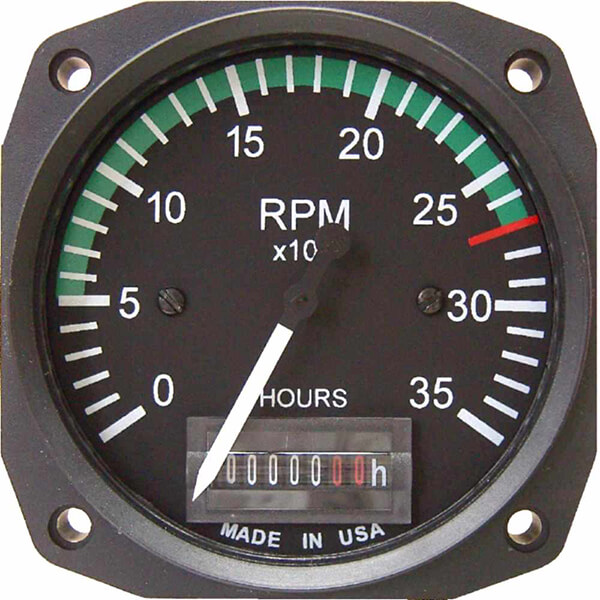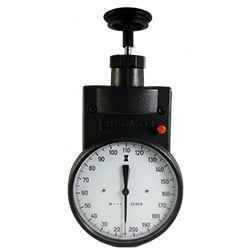Exactly How a Tachometer Assists Monitor Engine Health and Efficiency
Exactly How a Tachometer Assists Monitor Engine Health and Efficiency
Blog Article
The Value of a Tachometer in Checking Engine Speed and Efficiency in Automotive Applications
In the world of automobile engineering, the tachometer stands as a critical tool in the vehicle driver's arsenal, supplying a direct home window into the internal operations of a lorry's engine. Past its function as a mere scale of transformations per minute (RPM), the tachometer serves as an important tool for enthusiasts and specialists alike, supplying real-time understandings into engine performance and health and wellness. Understanding the relevance of this device exceeds surface-level monitorings, diving right into the elaborate connection in between engine rate, power result, and overall driving experience. As we explore the diverse function of the tachometer in auto applications, a deeper gratitude for its effect on lorry dynamics and effectiveness starts to arise.
Importance of Keeping Track Of Engine RPM
Keeping an eye on engine RPM, or changes per min, is an essential facet of auto upkeep and efficiency analysis. Engine RPM straight associates with the rate at which the engine's crankshaft turns, indicating how quickly the engine is running - tachometer. By monitoring RPM, mechanics can assess the wellness of the engine, identify possible problems, and fine-tune performance. An unusual RPM reading may signify issues such as engine misfires, defective ignition system, or issues with the gas shipment system. Regularly high RPM readings can suggest aggressive driving behaviors or the requirement for a higher gear shift to boost fuel efficiency.
In addition, keeping track of engine RPM is crucial for performance examination in auto racing and high-performance vehicles. In summary, keeping an eye on engine RPM is not just vital for finding concerns but also for enhancing engine efficiency in numerous automotive applications.

Advantages of Real-Time Information
In automotive applications, real-time data plays an important function in supplying instant insights into the performance and condition of the vehicle. By continuously keeping track of various parameters such as engine speed, temperature, fuel consumption, and more, real-time data offers numerous advantages that add to boosted performance and safety and security on the roadway.
In addition, real-time data helps with efficiency optimization by giving instant feedback on driving routines and engine efficiency. Vehicle drivers can change their behavior in real-time based on this info to attain far better gas economic situation and prolong the life-span of their automobile.

Moreover, real-time information plays an essential role in modern auto diagnostics, making it possible for specialists to promptly detect and resolve breakdowns. why not try these out This causes lowered downtime, lower upkeep prices, and ultimately, improved general lorry reliability and durability (tachometer). By harnessing the power of real-time data, vehicle stakeholders can make enlightened choices that positively affect both the efficiency and long life of the vehicle
Effect on Equipment Shifts
Reliable equipment changes in automobile applications significantly influence general performance and driving experience. The tachometer plays a critical role in optimizing gear shifts by supplying real-time engine rate information to the vehicle driver. When coming close to the redline on the tachometer, it signifies the driver to upshift to avoid over-revving the engine and creating possible damages. On the various other hand, downshifting at the appropriate minute can aid keep the engine in its power band, making certain receptive acceleration when required.
Additionally, the tachometer help in accomplishing smoother gear transitions, specifically in hand-operated transmissions. By keeping an eye on engine speed, drivers can perform gear changes at the ideal RPM range, reducing snagging movements and reducing wear on the transmission parts. This accuracy on duty changes not just improves driving comfort yet likewise contributes to sustain effectiveness.
Enhancing Fuel Performance
Provided the crucial duty the tachometer plays in enhancing equipment changes for performance and engine health, it straight contributes to taking full advantage of fuel effectiveness in automobile applications. By offering real-time comments on engine rate, the tachometer aids drivers in maintaining one of the most reliable RPM array for fuel economic situation. When motorists continually keep an eye on the tachometer and change their driving habits accordingly, they can stay clear of unneeded gas usage created by over-revving or lugging the engine.
Moreover, the tachometer assists vehicle drivers determine the most fuel-efficient equipment to be in at any given moment, preventing the engine from functioning more challenging than necessary. In verdict, the tachometer offers as an important tool in improving gas performance by promoting optimum driving behaviors and recognizing locations for improvement Related Site in the car's performance.

Making The Most Of Engine Durability
The tachometer's role in checking engine rate and performance is instrumental in ensuring the durability of auto engines. Keeping track of the tachometer permits motorists to stay within the suggested RPM variety for their automobile, protecting against unneeded strain on the engine and prolonging its life-span.

Final Thought
Finally, the tachometer plays an important function in keeping an eye on engine rate and performance in automobile applications. By providing real-time information on RPM, it allows for efficient gear changes, improved gas performance, and optimized engine longevity. This tool is crucial for maintaining optimum engine efficiency and guaranteeing the total capability of an automobile.
Report this page